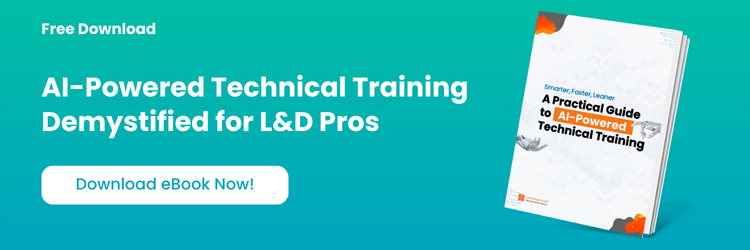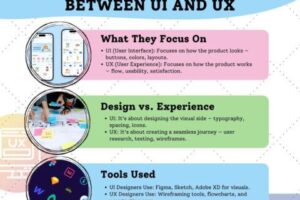
AI-Powered Technical Training: A Readiness Checklist
The buzz around AI in Learning & Development is loud—and growing louder. But for sales and service teams, it’s not just a trend. It’s a competitive imperative. AI-powered technical training helps reduce ramp time, improve field performance, and deliver consistent learning across distributed teams.
Still, many organizations hesitate to dive in. Some fear the tech. Others don’t know where to start. And most underestimate what AI-powered training really requires.
Download eBook: AI-Powered Technical Training
This blog provides a practical, no-fluff checklist to assess your readiness for AI-powered technical training. Whether you’re piloting a solution or scaling enterprise-wide, these categories will help you identify where you’re strong, where you need to invest, and how to build a roadmap for transformation.
Table Of Contents
Do You Have Clear Business Goals for Training?
Before adding AI to your stack, ensure your technical training is tied to outcomes that matter. Ask:
- What are the performance metrics we want to influence? (Time to productivity, CSAT, first-time fix rate, sales conversion?)
- Do we define success beyond course completion?
- Can we identify which roles, behaviors, or tasks drive business results?
If your goals are vague, AI won’t help. Garbage in, garbage out.
Are Your SMEs Ready to Collaborate Differently?
In AI-powered technical training, SMEs shift from content creators to insight providers.
- Are your SMEs open to recorded interviews over written content?
- Can they spare 30–45 minutes for structured input?
- Do you have a plan to extract their expertise efficiently (e.g., through AI transcription + summarization)?
If your SMEs are unavailable or siloed, training will still be slow—AI or not.
Can You Produce and Deploy Microlearning?
AI speeds up content creation, but your team must be comfortable with short-form, just-in-time formats:
- Do you already design with modular learning in mind?
- Do you have tools (e.g., Vyond, Synthesia, Articulate Rise) that support bite-sized content?
- Is your LMS or LXP mobile-friendly and microlearning-capable?

Is Your Content Tagged and Searchable?
AI thrives on structured data. Your content must be findable:
- Is your current training content tagged by role, product, task, or skill?
- Do you use metadata, taxonomies, or AI-assisted tagging tools?
- Do you have a knowledge base or learning repository (e.g., Notion, Guru, Confluence)?
If your content is trapped in PDFs or scattered folders, AI won’t unlock its value.
Do You Use Assessment and Performance Data?
To personalize training, AI needs insight into what learners know—and don’t.
- Do you use quizzes, simulations, or skill checklists?
- Can you track learner performance with tools like xAPI, LMS analytics, or LRS?
- Do you connect technical training data with KPIs (e.g., service calls, close rates)?
If all you track is “course completed,” you’re not ready to personalize.
Have You Piloted AI Tools Already?
You don’t need a full AI suite on Day 1. But you should:

Do You Have a Cross-Functional Learning Team?
AI-powered training requires coordination:
- L&D must collaborate with product, engineering, and field ops
- SMEs, IDs, data analysts, and IT must be aligned
- Leadership must sponsor the shift and define success metrics
If training is siloed or lacks executive support, AI adoption will stall.
Are You Prepared to Iterate and Improve?
AI accelerates feedback loops:
- Can your team revise content rapidly based on data or learner feedback?
- Do you have sprint-based development processes?
- Are you tracking what works and sunsetting what doesn’t?
If you treat training as a one-time event, AI won’t help you evolve.
Discover how effective technical training not only boosts employee skills but also drives retention and delivers measurable business results.
Your AI Training Readiness Scorecard
Give yourself 1 point for each “Yes”:
- 0–3: Early stage. Start with small pilots and basic automation.
- 4–6: Emerging. You’re ready to operationalize workflows with AI.
- 7–8: Advanced. Time to scale and optimize.
Final Thought
AI is not a magic wand. It won’t fix broken processes, vague goals, or outdated content. But if your training function is evolving—leaner, faster, and closer to business impact—AI will be your multiplier.
Use this checklist to align your team, your tools, and your expectations. Because AI-powered technical training is no longer a futuristic idea.
It’s a present-day advantage.
And the question isn’t if you’ll adopt it.
It’s whether you’re ready.





